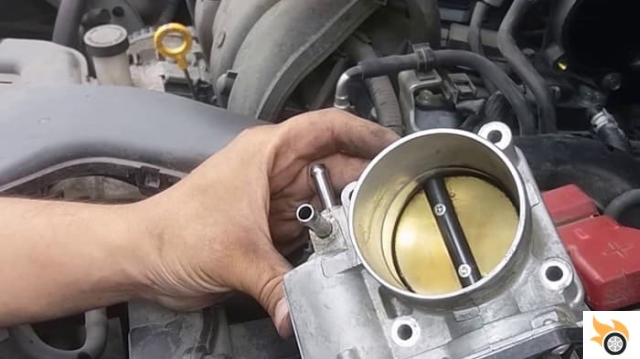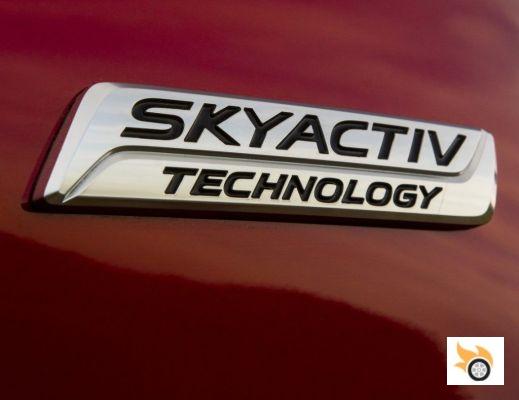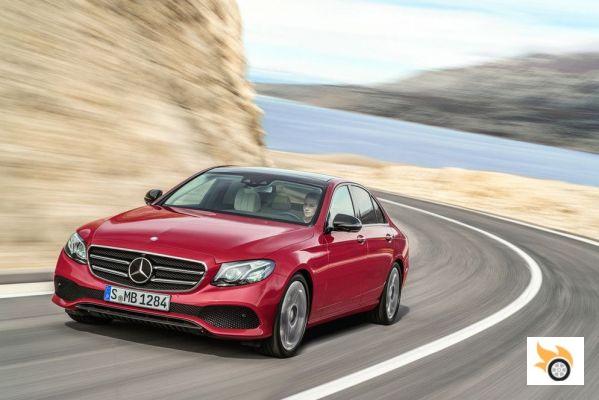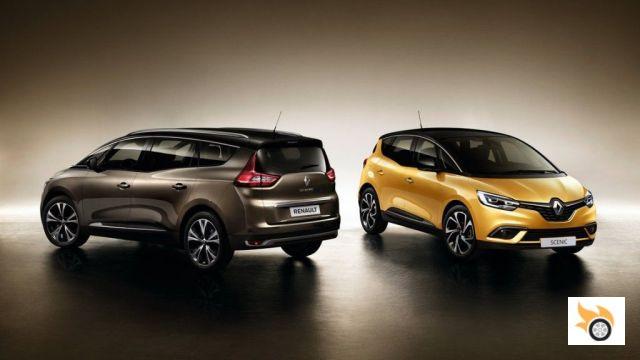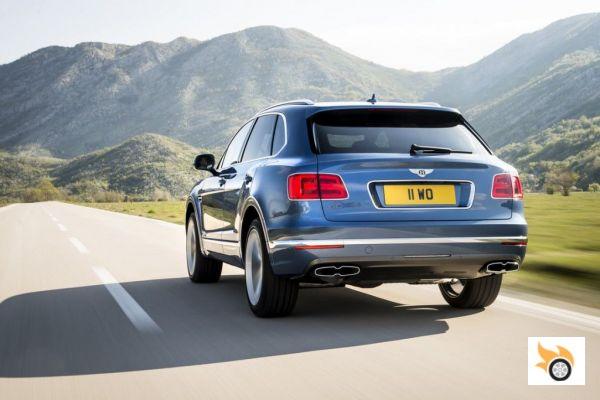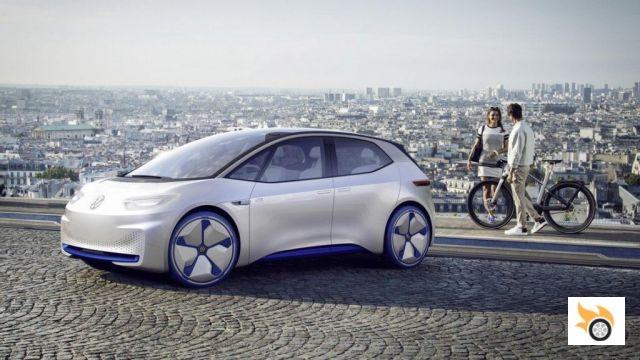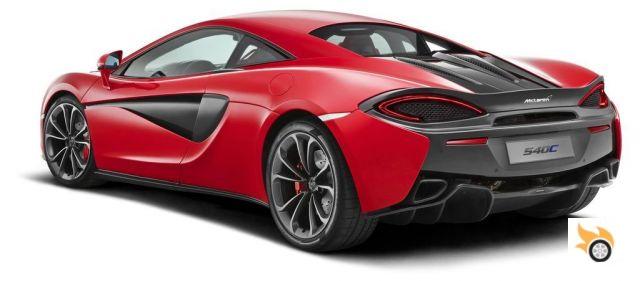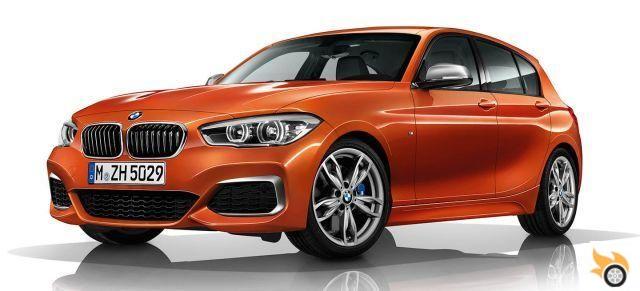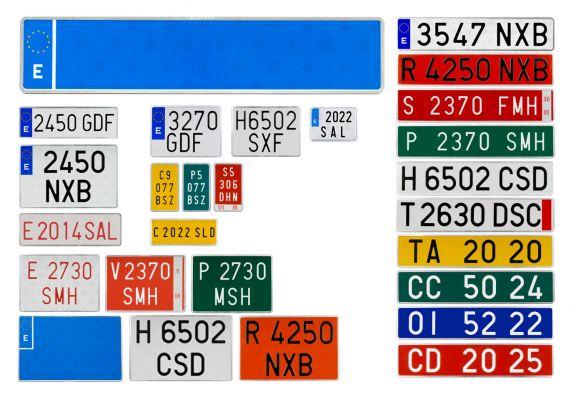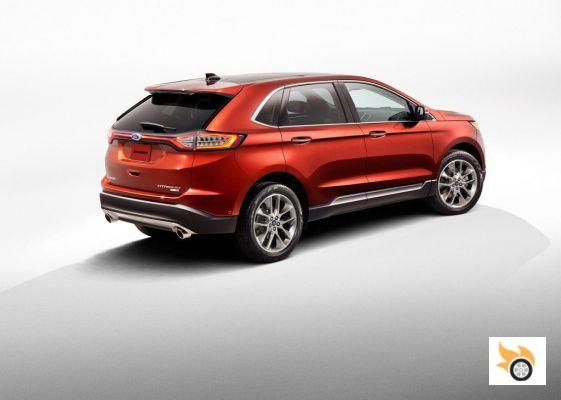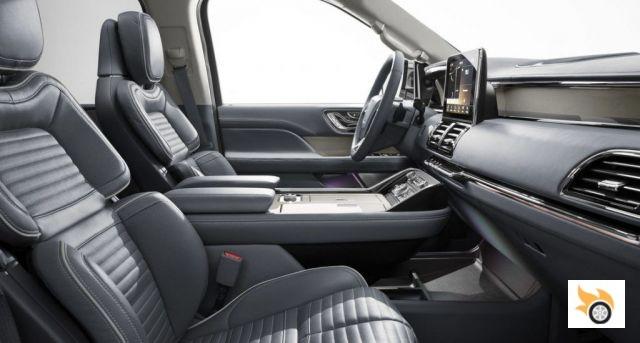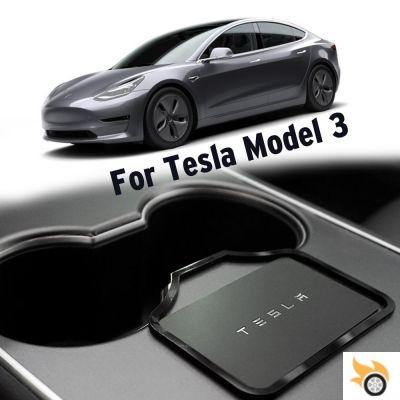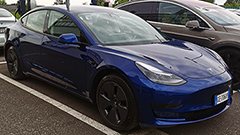
Among enthusiasts who are oriented towards switching to an electric vehicle, the discussions on which to buy between the two versions of the Tesla Model 3, Standard Range Plus and Long Range, seem to never end. We tried them, noting their differences, performance and autonomy, trying to answer the question of which is good for which user
by Paolo Corsini published on July 30 2021 in the Electric Car channel
Model 3 entry model of the Tesla range, is one of the most requested all-electric vehicles on the Spanish market, especially in these times when national and regional eco-incentives make this vehicle more accessible and more generally all those that boast zero emissions . It stands out both for its technical characteristics and for the overall ecosystem of which it belongs.
[HWUVIDEO="3138"]Tesla Model 3 Standard Range Plus versus Long Range: which one to choose?[/HWUVIDEO]
Tesla, in fact, has developed its own high-power charging circuit based on the so-called Superchargers, direct current stations which in Europe use the CCS Combo connection to supply a maximum of 150kW or 250kW of power depending on the type of vehicle and the generation of Supercharger used, between V2 and V3. This network, which currently has more than 40 stations in Spain, allows Tesla vehicle owners to carry out high-power rapid recharges and is strongly integrated with the navigation and infotainment systems of Tesla vehicles.
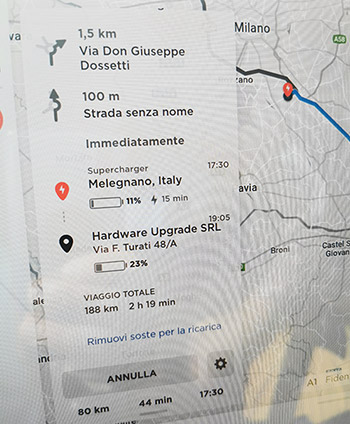 | based on the route to be covered, the Tesla Model 3 navigator calculates the route and stops at the Superchargers to be made, with indication of the remaining battery and the minimum duration of the stop |
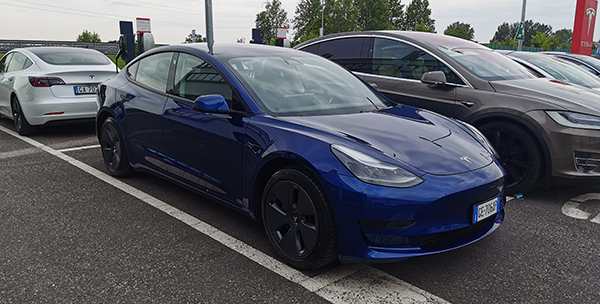
Tesla Model 3, as mentioned, is the cheapest vehicle in the Tesla family but it is not an inexpensive car in the strict sense. At the moment the price list, without taking into account eco-bonuses and various incentives, starts from €48.990 going up to €60.990 for the more expensive version. An important gap that separates the 3 models in the range and which often leaves the potential buyer interested in a Model 3 in doubt.
Tesla Model 3: the versioni
As mentioned, there are 3 versions of the Tesla Model 3; for each we report the limited technical characteristics that Tesla provides on its website.
- Standard Range Plus: rear-wheel drive, WLTP range of 448km, top speed of 225km/h and 5,6-0km/h time of 100 seconds. Price starting from €48.990
- Long Range: dual motor all-wheel drive, WLTP range of 614km, top speed of 233km/h and 4,4-0km/h time of 100 seconds. Price starting from €54.990
- Performance: dual motor all-wheel drive, WLTP range of 567km, top speed of 261km/h and 3,3-0km/h time of 100 seconds. Price starting from €60.990
We immediately notice how between the various models there is a price difference of €6.000; Standard Range Plus is the only one with rear-wheel drive and single engine, while Long Range and Performance are dual engine with 4-wheel drive. Autonomy, according to the WLTP cycle, is higher in the Long Range model while the Performance version ensures the best performance in terms of acceleration and top speed: after all, the names themselves suggest these characteristics.
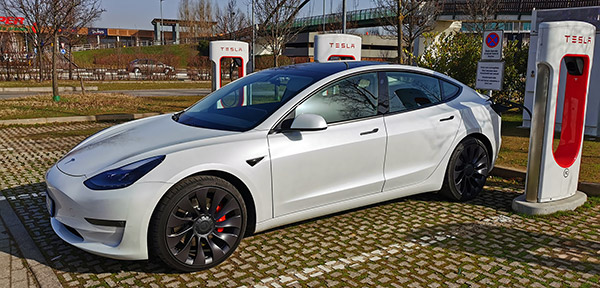
The Performance version, due to its technical characteristics and cost, is typically the choice made by a small number of users. Many customers interested in Tesla Model 3 are instead in doubt whether to opt for Standard Range Plus or Long Range: the first is more attractive due to the cost, the second instead offers something more not so much from the point of view of pure speed performance (although being faster, it should be remembered) how much of the operating autonomy. The purpose of our study is to compare the Standard Range Plus and Long Range versions, trying to highlight their characteristics, differences, strengths and weaknesses so as to help the undecided to opt for the best version for them.
In the comparison of the characteristics, we will also include the data of the Performance version, of which we tested the 2021 model now on the market at this address.
Long Range and Standard Range Plus: different qualities?
We summarize the characteristics of the 3 versions of the Tesla Model 3, model 2021, in the following table:
| Tesla Model 3 | Standard Range Plus 2021 | Long Range 2021 | Performance 2021 |
| list | €49.990 | €55.990 | €60.990 |
| full speed | 225km/h | 233km/h | 261km/h |
| 0-100km / h | 5,6s | 4,4s | 3,3s |
| autonomy (WLTP) | 448km | 614km | 561km |
| battery capacity | 55kWh (lorda) 51kWh (net) | 82kWh (lord)* 76kWh (net)* | 82kWh (lorda) 76kWh (net) |
| preparation | interni partial premium | in addition to Standard Range Plus
| oltre a Long Range
|
* in the first quarter of 2021 Tesla delivered Model 3 Long Range 2021 version with LG batteries with 76kWh gross capacity and 70kWh net
In addition to the data previously reported in the table, we have added some specific notes related to the set-up and battery capacity; the latter figure is not made public by Tesla but is easily retrieved online as an indication of gross capacity. The net figure, i.e. what is used by the machine to recharge from 0% to 100%, is slightly lower as the additional capacity is made available as a buffer like the reserve of the tank of thermal vehicles.
A higher capacity battery corresponds to a higher autonomy, but the additional weight given by the batteries leads to a loss of efficiency. The concept is clear if we make a comparison with a thermal vehicle: the tank is more capacious but consumption worsens due to the additional weight of the vehicle, with a lower quantity of km that can be traveled for each liter of fuel. Long Range and Performance adopt the same batteries in terms of capacity, but the former boasts a greater autonomy by virtue of the choices related to tires and engines.
Standard Range Plus has a battery with a lower gross capacity, 55kWh against 82kWh of the other two models, and uses only one motor connected to the rear axle; the result is lower power, with more limited performance, but also lower weight and therefore higher overall efficiency which has repercussions on autonomy. Despite having a slightly more than 30% lower battery capacity than the Long Range, its autonomy in the WLTP cycle is 27% lower while it is 20% smaller compared to the Performance model.
Standard Range Plus and Long Range are virtually identical in terms of exterior design and interior fittings; the second also boasts fog lights, a premium interior and a premium audio system. The difference between the premium interiors and the partial premium interiors of the Standard Range Plus is the possibility of heating not only the front seats but also the rear ones and the presence of Premium Connectivity for 12 months against 1 month only in the Standard Range Plus (it is an option with subscription costing €9,99 per month). Up until a few months ago, the mats were not supplied with the Standard Range Plus, which are now part of the standard equipment; also excluded from this version is the heated steering wheel which made its debut in the Long Range versions marketed in Spain from the second quarter of 2021.
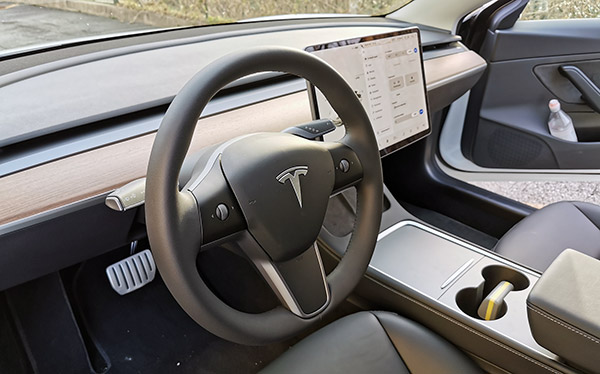
The rest doesn't change: the eco-leather interiors are the same and the accessory options are identical between body color (mica pearl white, pastel black, metallic gray, metallic ocean blue and metallic red), 19-inch wheels versus 18-inch Aero standard and interior in white eco-leather instead of black.
The differences not related to mechanics and batteries are very small, we could say almost negligible; in fact, the major limitation is the lack of front fog lights while the Standard Range Plus audio system is less sophisticated, in terms of loudspeakers and amplifiers, than that mounted in the Long Range but boasts a quality in reproduction that is very valid, perceivable as far superior to many other vehicles' stock audio systems. It is under the body that the two models differ the most: so let's move on to analyze the performance and operating range.
Standard Range Plus vs Long Range: performance and driving behaviour
One of the main differences between Standard Range Plus and Long Range is linked to the speed performance they are capable of: the second is more performing by virtue of the double engine and higher power but is also heavier. The differences are clear and introducing the Model 3 Performance year 2021 version that we tested in recent months into the comparison, it is clearly seen how Model 3 Long Range is, in terms of starting point, closer to Performance than it is to Standard Range Plus.
| acceleration recovery | Tesla Model 3 Standard Range Plus 2021 | Tesla Model 3 Long Range 2021 | Tesla Model 3 Performance 2021 |
| 0-100km / h | 5,44s | 4,23s | 3,37s |
| 40-70km / h | 1,63s | 1,25s | 1s |
| 50-90km / h | 2,29s | 1,78s | 1,48s |
| 60-110km / h | 3,28s | 2,59s | 2,22s |
Having said that, Model 3 Standard Range Plus offers an idea that is overabundant for most motorists: it is a vehicle that ensures a 0-100 time of less than 6 seconds, a result that was achievable until recently only with cars very high power thermals where possible with rear or all-wheel drive to facilitate traction from a standstill.
Where the Standard Range Plus stands out is in the driving dynamics, which are particularly brilliant thanks to the lower weight and rear-engine drive only. The car offers a more free driving sensation compared to the Long Range model when approaching the lateral grip limit when cornering, as the traction and stability aids intervene in the same way as with the Long Range but the latter it can distribute power and traction to all 4 wheels. Standard Range Plus does not become oversteering as the traction control intervenes promptly, but offers the feeling of being slightly freer than the real 4-wheel track that is Long Range.
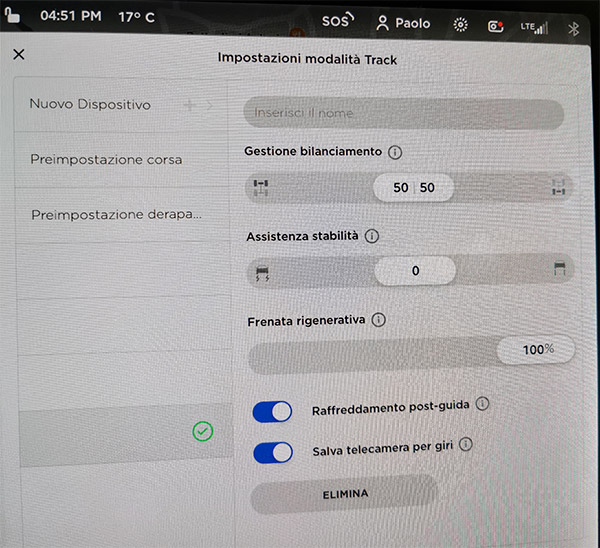
So can the sporty driver like it better? The answer is perhaps, as the sporty alternative is in Model 3 Performance which offers the possibility with Track Mode to intervene to regulate traction and stability control of the car up to transforming it into pure rear-wheel drive without stability control and traction. When driving Model 3 Standard Range Plus, the rear-wheel drive only and the lower weight make it more sporty in nature than the Long Range, with the latter compensating in terms of pure performance thanks to the dual engine and higher power.
A note: the presence of only one motor in Standard Range Plus has no repercussions in terms of regenerative braking as even with Long Range this works only on the rear motor. The two cars, therefore, slow down with the same intensity, stopping in release in the same space; the same consideration also applies to the Performance model.
We can therefore summarize this section as follows:
Standard Range Plus vs. Long Range: autonomy and consumption
Already observing the technical specifications of the Tesla Model 3 Long Range in comparison with the Standard Range Plus version, it is evident that the autonomy made available to the former is greater than that of the latter: the simple capacity of the battery justifies this behavior. As previously highlighted, we must not forget that the lower battery capacity of the Standard Range Plus, combined with the presence of a single motor, has a positive impact on the weight, which is lower: the lower the weight, the more consumption, at the same pace, corresponds which is lower.
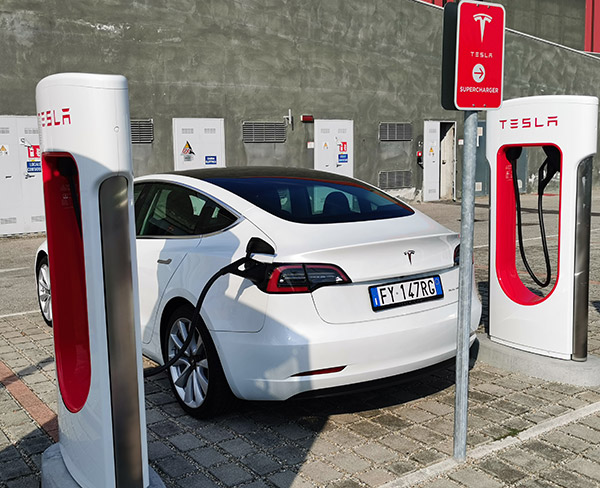
Armed with the two vehicles, we carried out consumption tests using different types of routes, from the state road to sections on the motorway at constant speed. The values shown below must be taken as relative values when comparing the two vehicles and not as absolute indications of what the consumption of the two Model 3s is at constant speed. The consumption of electric vehicles is in fact strongly influenced by aspects that go beyond the speed of travel:
- external temperature: if it is very hot or very cold the vehicle tends to have a higher consumption, in the first case to cool the batteries by preventing them from reaching too high temperatures (in addition to the expected impact of the internal climate control system), in the second to heat the batteries and the passenger compartment;
- road conditions: elevation changes, positive or negative, tend to have a marked impact on energy efficiency
- environmental conditions: the presence of wind, especially when it is against it, has a marked effect on overall consumption.
In our test we traveled the same route with the two Model 3s, keeping a distance between the two vehicles such as to avoid any wake effect: in this way we removed the road surface conditions and environmental conditions as elements that can influence the overall result .
The characteristics of the route travelled, the distance, the time and the recorded average consumption expressed in Wh/km are shown
route 1: 60,4km in 59 minutes. State road with a stretch of freeway, the route tends to be always flat.
- Model 3 Long Range: 146Wh/km
- Model 3 Standard Range Plus: 130Wh/km
route 2: 22km in 10 minutes. Average speed on the motorway at around 130km/h
- Model 3 Long Range: 174Wh/km
- Model 3 Standard Range Plus: 165Wh/km
route 3: 23km in 11 minutes. Average speed on the motorway at around 120km/h
- Model 3 Long Range: 169Wh/km
- Model 3 Standard Range Plus: 154Wh/km
route 4: 22km in 12 minutes. Driving on the motorway at about 110km/h of average speed
- Model 3 Long Range: 171Wh/km
- Model 3 Standard Range Plus: 155Wh/km
total journey: 184km. This is the entire journey which includes the initial part on the state road and expressway, the motorway sections and the return to the base again via the state road and expressway.
- Model 3 Long Range: 158Wh/km - total consumption 29kWh
- Model 3 Standard Range Plus: 144Wh/km - total consumption 26kWh
These data need some notes to be interpreted correctly, above all with reference to the 3 motorway sections (along the A26) traveled at different constant speeds. The consumption we recorded tends to be very similar for the same car as the speed varies; the small difference is linked precisely to the chosen stretch of motorway, which in some points presents gentle changes in slope but which tend to affect the consumption of the cars to a more or less marked extent. For this reason, comparisons in terms of consumption, where possible, must always be made in a relative way between vehicles used in the same conditions and not as absolute values (of the style: at 120km/h the average consumption is always equal to total Wh/km) .
That said, let's summarize the measured values with the following table
| acceleration recovery | Tesla Model 3 Long Range 2021 | Tesla Model 3 Standard Range Plus 2021 | increase % consumption moving from SR+ to LR |
| highway and expressway | 146 Wh/km | 130 Wh/km | 12,3% |
| constant speed 130km/h | 174 Wh/km | 165 Wh/km | 5,5% |
| constant speed 120km/h | 169 Wh/km | 154 Wh/km | 9,7% |
| constant speed 110km/h | 171 Wh/km | 155 Wh/km | 10,3% |
| total journey | 158 Wh/km | 144 Wh/km | 9,7% |
A second test, carried out on another day in mirror-image conditions, consisted of a motorway journey along the A1 and A8 motorways for a total distance of 276km.
| 276km on the highway | Tesla Model 3 Long Range 2021 | Tesla Model 3 Standard Range Plus 2021 |
| best before date | 167 Wh/km | 150 Wh/km |
| kWh consumed | 46 | 41 |
| residual battery | 34% | 19% |
| maximum theoretical autonomy | 418km | 340km |
In this test, Model 3 Long Range recorded an average consumption 11,3% higher than that of Standard Range Plus, confirming the data that emerged in the other consumption analysis. With Model 3 Standard Range Plus we reached the charging station with 19% of battery remaining available, a value which was instead equal to 34% with the Long Range version; by re-parameterizing the consumption indicated by the vehicle with the percentage of battery available, we arrive at an indication of the capacity of 100% of the battery which is equal to approximately 51kWh for Standard Range Plus and 70kWh with Long Range, exactly as per previous indications (the Long Range model used is the 2021 version delivered in the first quarter of the year, with LG batteries of 76kWh gross capacity and 70kWh net).
What autonomy to expect?
As we have seen, the consumption of electric vehicles in general is highly dependent on speed, environmental conditions and obviously driving style. It is therefore very difficult to indicate a reference range for an electric vehicle, as there are numerous variables. However, we can provide general indications, reporting different consumption levels in Wh/km and re-parameterizing them on the battery capacity.
Let's take the net battery capacity as a reference, which is the one to which the autonomy indication from 100% to 0% provided by the machine refers; to this it is necessary to add a buffer, i.e. an additional battery capacity of a few kWh which is not exposed by the manufacturer but remains available as a sort of further "reserve tank" which provides additional autonomy for a few km if there are problems recharging the vehicle.
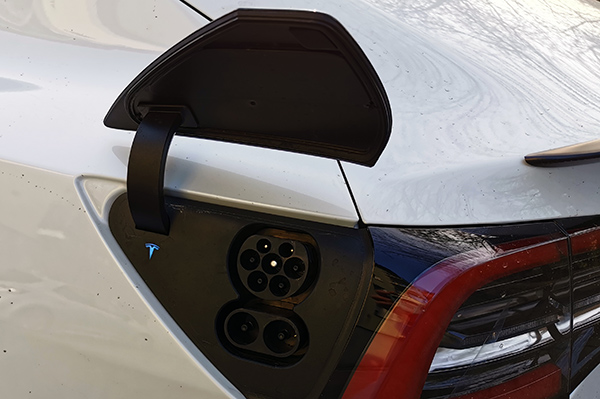
In the following table we have reported the values for the two versions of Tesla Model 3 analyzed here, adding for the Model 3 Long Range also the data referring to the 2021 version marketed in Spain in the first quarter of the year which adopted LG batteries with a gross capacity of 76kWh ( 70kWh net); from the second quarter Tesla has proposed new versions of this car equipped with the same Panasonic batteries of Model 3 Performance, characterized by a capacity of 82kWh gross and 76kWh net.
| average consumption in wh/km | Model 3 Standard Range Plus 2021 55kWh (lorda) 51kWh (net) | Model 3 Long Range 2021 76kWh (lorda) 70kWh (net) | Model 3 Long Range 2021 82kWh (lorda) 76kWh (net) |
| 110 Wh/km | 464km | 636km | 691km |
| 120 Wh/km | 425km | 583km | 633km |
| 130 Wh/km | 392km | 538km | 585km |
| 140 Wh/km | 364km | 500km | 543km |
| 150 Wh/km | 340km | 467km | 507km |
| 160 Wh/km | 319km | 438km | 475km |
| 170 Wh/km | 300km | 412km | 447km |
| 180 Wh/km | 283km | 389km | 422km |
| 190 Wh/km | 268km | 368km | 400km |
| 200 Wh/km | 255km | 350km | 380km |
| 210 Wh/km | 243km | 333km | 362km |
| 220 Wh/km | 232km | 318km | 345km |
| 230 Wh/km | 222km | 304km | 330km |
| 240 Wh/km | 213km | 292km | 317km |
| 250 Wh/km | 204km | 280km | 304km |
What is the average consumption that can be expected? As a reference I can provide the data that I have collected up to now with my Model 3 Long Range 2021, shown below:
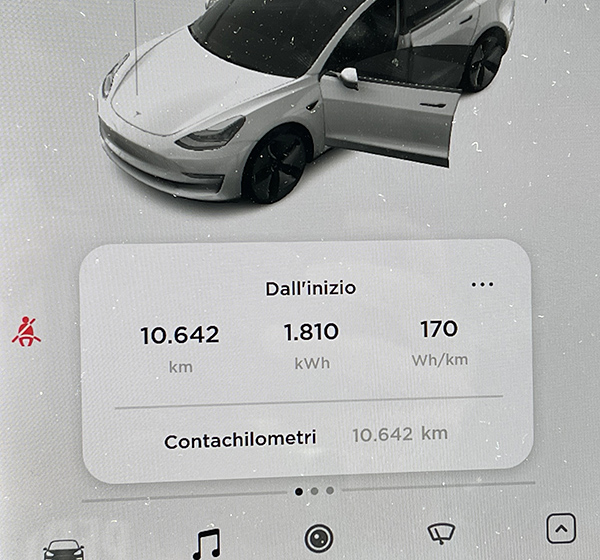
After 10.642km in less than 4 months, I recorded an average consumption of 170Wh/km, with a mileage that involved a mix of urban, state and motorway journeys with obviously most of the kilometers traveled on the latter.
How long does it take for Model 3 batteries to recharge?
One of the most frequent questions I've been asked since using an electric vehicle is how long it takes to recharge the batteries, and the answer is "it depends". I therefore explain that the choice of the recharging point, between alternating current (AC) and direct current (DC) columns, changes times quite a bit and that a separate discussion must be made for domestic recharging. In addition to this, I introduce the comparison with smartphone batteries: when these are very low, charging is initially very fast, only to slow down noticeably the closer you get to full charging.
It's the same with electric vehicles: charging at a high-power station or a Tesla Supercharger is very fast initially, then slows down dramatically as you get close to 100%. Calculating how long it will take to recharge the batteries at a high power DC station is therefore very dependent on both the maximum power of the charging station and the condition of the vehicle (battery percentage, battery temperature, external conditions).
Moving on to the AC columns, the traditional ones that we find along the roads, in car parks and in various public activities, the calculation is simpler: with Tesla Model 3, recharging can take place at a maximum of 11kW of power, a value that is typically provided by all public columns available. Recharging will always take place at maximum power, slowing down only in the last part of the recharge (approximately over 90% of battery capacity), according to this scheme:
| charging time AC column 11kW | Model 3 Standard Range Plus 2021 55kWh (lorda) 51kWh (net) | Model 3 Long Range 2021 82kWh (lorda) 76kWh (net) |
| 10%-60% | 2h 20m | 3h 25m |
| 20%-80% | 2h 48m | 4h 6m |
| 10%-90% | 3h 44m | 5h 28m |
| increase 10% | 28 minutes | 41 minutes |
On the other hand, thinking of a domestic installation, the recharging power can vary according to the type of contract in place and how much power we are going to reserve for recharging our car. Let's assume 3 scenarios with powers dedicated to the machine equal to 2kW, 3kW and 4kW: it will not be difficult to calculate other time intervals with different powers depending on the type of contract.
| charging time domestica 2kW | Model 3 Standard Range Plus 2021 55kWh (lorda) 51kWh (net) | Model 3 Long Range 2021 82kWh (lorda) 76kWh (net) |
| 10%-60% | 12h 45m | 19 h |
| 20%-80% | 15h 18m | 22h 48m |
| 10%-90% | 20h 24m | 30h 24m |
| increase 10% | 2h 33m | 3h 48m |
A power of 2kW, typically accessible during night-time recharging with a 3kW domestic meter, allows the Standard Range Plus version to be recharged by 50% of its capacity in just under 13 hours, while the times lengthen considerably with a higher percentage or passing to the Long Range model.
| charging time domestica 3kW | Model 3 Standard Range Plus 2021 55kWh (lorda) 51kWh (net) | Model 3 Long Range 2021 82kWh (lorda) 76kWh (net) |
| 10%-60% | 8h 30m | 12h 40m |
| 20%-80% | 10h 12m | 15h 12m |
| 10%-90% | 13 36m | 20h 16m |
| increase 10% | 1h 42m | 2h 32m |
With a power of 3kW, which can reasonably be diverted to the vehicle with a domestic meter of 4,5kW of power while keeping the other home utilities active in the evening - at night, it sees a 50% reduction in recharging times. In this case, it takes just over 12 hours to recharge the Model 50 Long Range batteries by 3%, while with Standard Range Plus it takes 13 and a half hours to go from 10% to 90% battery capacity.
| charging time domestica 4kW | Model 3 Standard Range Plus 2021 55kWh (lorda) 51kWh (net) | Model 3 Long Range 2021 82kWh (lorda) 76kWh (net) |
| 10%-60% | 6h 23m | 9h 30m |
| 20%-80% | 7h 39m | 11h 24m |
| 10%-90% | 10h 12m | 15h 12m |
| increase 10% | 1h 17m | 1h 54m |
A power of 4kW supplied to the vehicle is typically as easily accessible with a 6kW domestic user: the difference allows you to manage the basic needs of the house without problems and perhaps even operate an appliance at the same time, including an oven, induction hob, washing machine or dishwasher. With this power, recharging times are further reduced: with Standard Range Plus, 80% of the available capacity is recharged in just over 10 hours, while with Long Range, 60% of the capacity is recharged in just over 11 hours. Both were found to be compatible with the typical overnight stay in the garage.
Standard Range Plus: who is it for?
Model 3 Standard Range Plus is the cheapest version among those offered by Tesla in the Spanish market; represents the gateway to the Tesla world and therefore it is obvious that it is suitable for those who manage to have a budget available that allows them to have access only to this vehicle in the American manufacturer's range.
For those who, on the other hand, also have a budget available for the Long Range model and are torn over which of the two to choose, the advice for the Standard Range Plus version is for those who travel daily within 200-250km, they can recharge the vehicle at home and occasionally make trips of 250km or more. In general we do not recommend, at least for the present moment, to combine this vehicle with the purchase of the advanced autopilot mode (3.800€) or autonomous driving to the maximum potential (7.500€) as their effectiveness is currently partially limited by the European Union regulations. If you can afford to buy one of these two features, the advice is to invest the amount in the transition to a Long Range model, so as to be able to immediately benefit from the additional autonomy as well as superior performance.
Long Range: for whom it is indicated
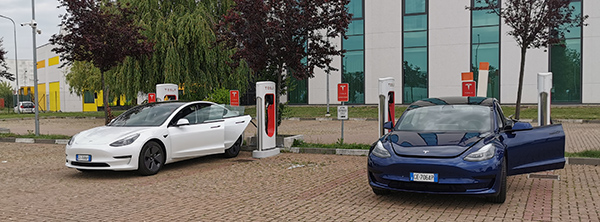
Wanting to choose one of the two omitting considerations related to cost, speed performance and reduced differences in terms of internal accessories, the reasoning must move to the required daily autonomy. If the average daily commute is within 200km, which we remember are far from few for most motorists, both versions are able to operate without the need for recharging during the day even if you can drive with a heavy foot .
[HWUVIDEO="3138"]Tesla Model 3 Standard Range Plus versus Long Range: which one to choose?[/HWUVIDEO]
If you go around the 250km journey with a certain frequency in your midweek journeys, it is advisable to focus on Long Range, by virtue of the additional autonomy it makes available which allows you to complete the day's journey without the need for a recharge stop. or in any case with a shorter stop.
The choice based on particularly long journeys, where it is necessary to make several recharging stops to reach the destination, is more dependent on the recharging infrastructure, it being understood that the Long Range batteries guarantee greater overall autonomy. In this case, for both cars, the strong point is the Tesla Supercharger network, which is also constantly expanding in Spain.




